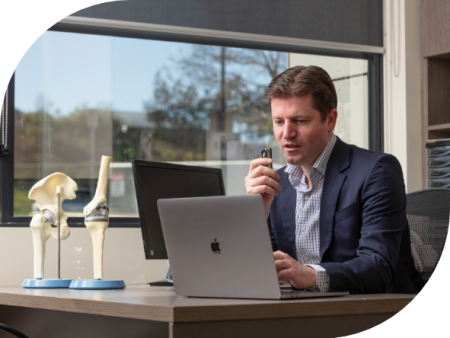Gluteal Tendon Tear
What are Gluteal Tendons?
The gluteal tendons provide attachment to the femur bone for two strong muscles, the gluteus medius and gluteus minimus. These muscles on the side of the hip, form one of the most important functions around the hip joint, as they are primarily responsible for keeping your pelvis and torso level during gait and single leg stance. Due to the relatively short lever arm of these abductor muscles, considerable forces are generated through the tendon attachments to the greater trochanter of the femur. Overlying these tendons and the greater trochanter bone, lies the trochanteric bursa, which provides lubrication to the tissues.

Pathology on outer aspect of the hip ranges from inflammation of the gluteal tendons (tendonitis) or bursa (trochanteric bursitis), to tendon degeneration (gluteal tendinopathy) or gluteal tendon tear. There is often considerable overlap of these pathological processes and these terms are often used interchangeably. These conditions are more common in elderly people and middle-aged females. The most common cause for pathology is tendon degenerative change, called tendinopathy. Trauma, overuse, inflammatory conditions and past hip surgery can also have an impact.

Symptoms of Gluteal Tendon Tear
Pain from gluteal tendon pathology is usually felt on the side of the hip, whereas hip joint pathology is more commonly felt in the groin. The pain may be exacerbated by walking, particularly on hills and stairs. Many patients report night pain, especially when lying on their side. It is not uncommon for patients to develop a pronounced limp.
Diagnosis is made following a thorough history and physical examination. Plain xrays are useful to rule out hip joint pathology and may provide some evidence of chronic bone changes at the site of tendon attachment. Diagnosis can be confirmed with either ultrasound or MRI testing. MRI provides more detailed and reliable information than ultrasound. In many cases, patients will have a combination of arthritis of the hip as well as gluteal pathology.
Treatment options
There are a range of treatment options for these conditions. Simple measures include analgesia, anti-inflammatory medication, physiotherapy and use of walking aids. The next level of intervention includes injection of cortisone or platelet-rich plasma. Some patients may be candidates for surgical repair of the tendon. Dr Woodbridge will assess your hip and advise you of the most appropriate treatment options in regards to your hip.

